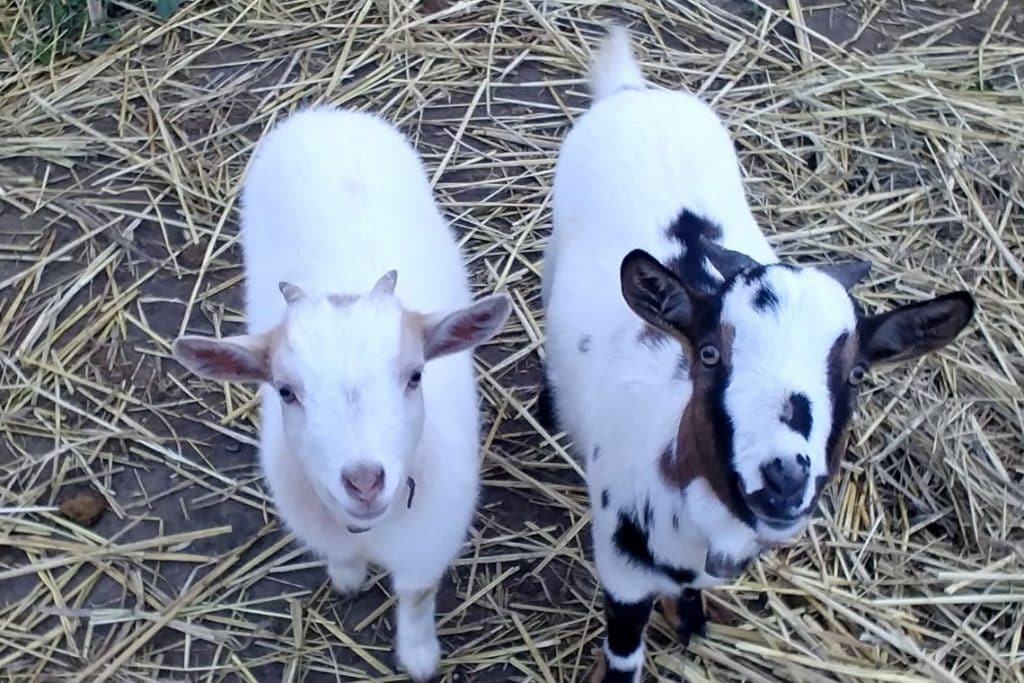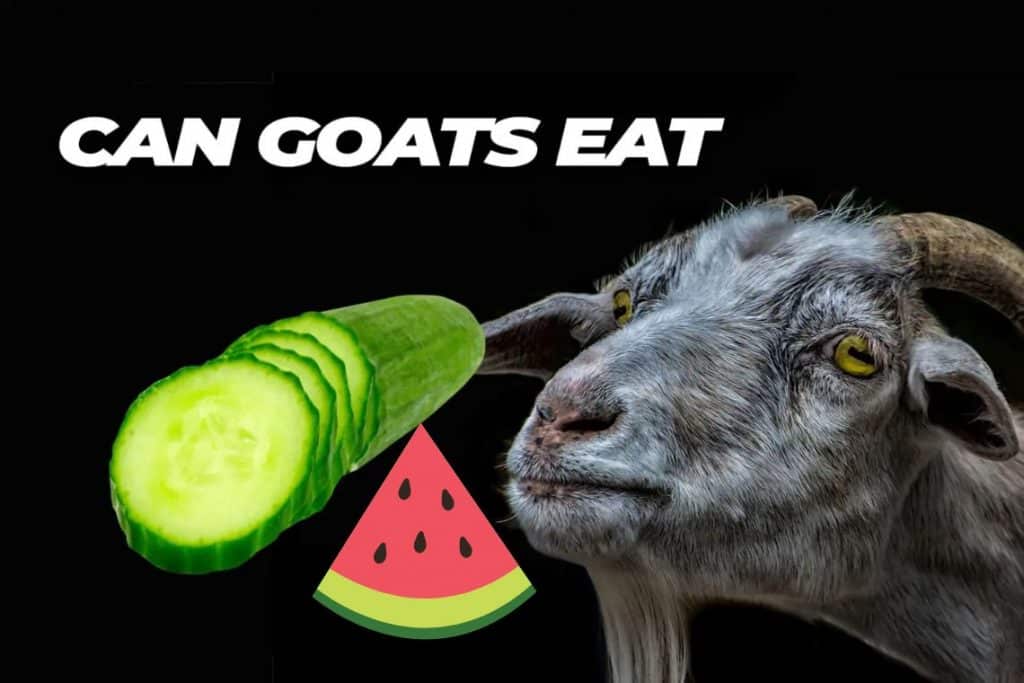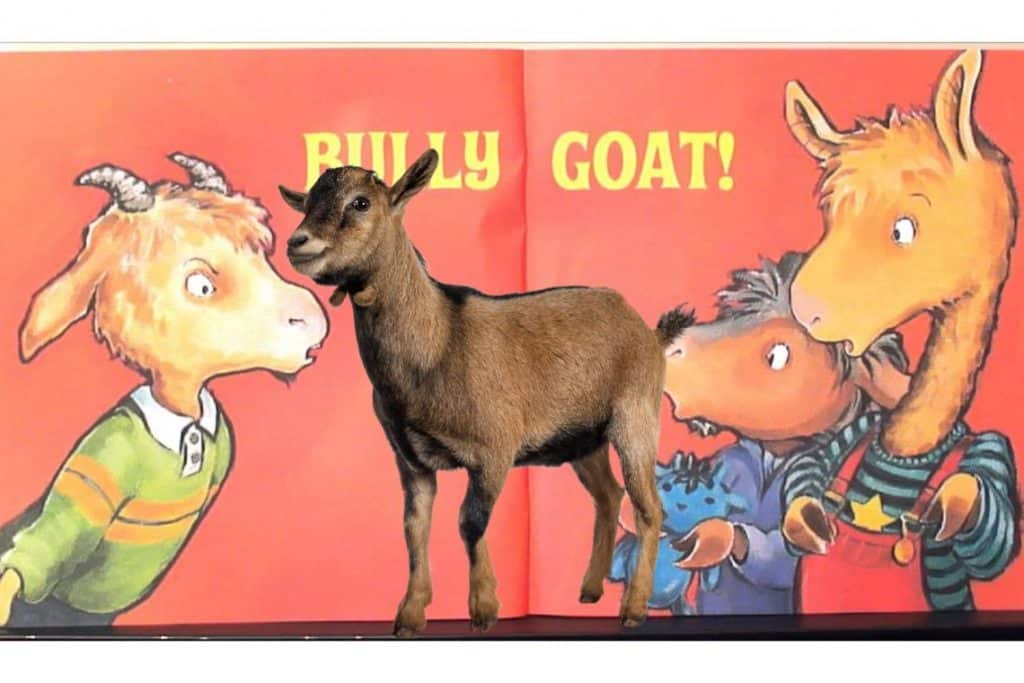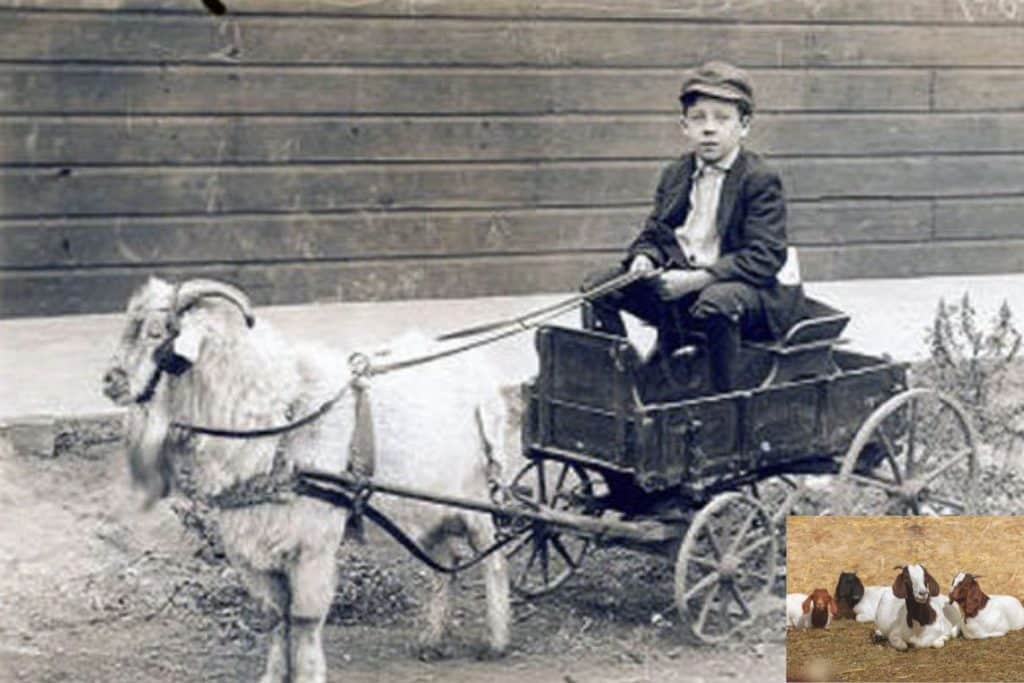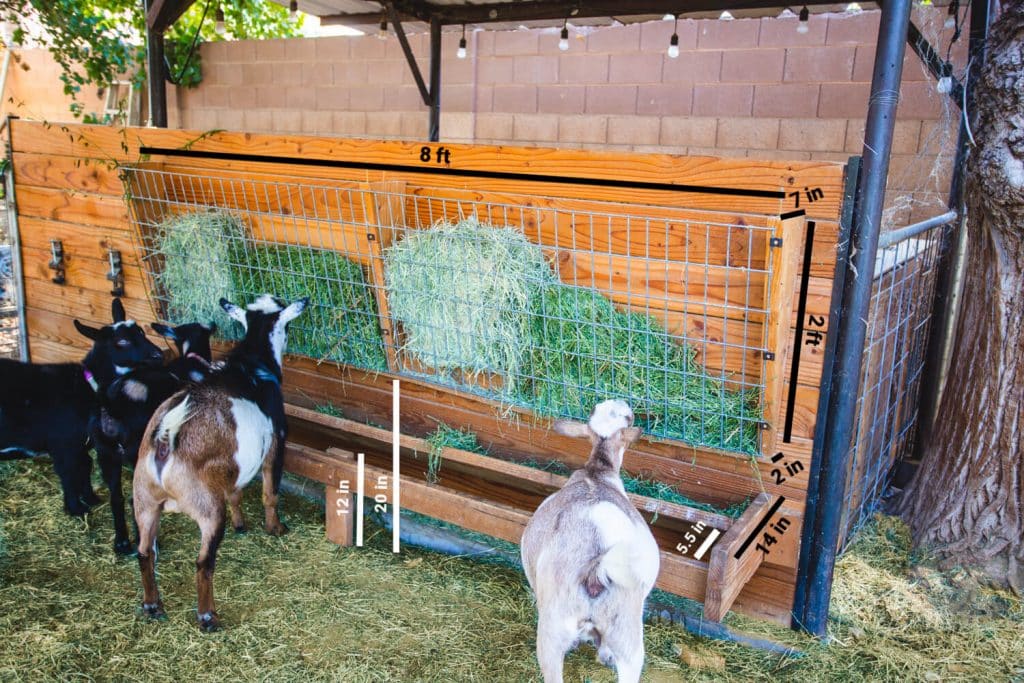Goat cheese is a type of cheese made from the milk of goats. It is known for its distinct flavor and creamy texture.
Goat’s cheese, made from the milk of goats, is a popular cheese known for its unique flavor and creamy texture. Its tangy, slightly acidic taste sets it apart from other types of cheese, making it a favorite among cheese enthusiasts.
Read More:
With a rich and spreadable texture, goat’s cheese is versatile and can be used in a variety of dishes. Whether crumbled on a salad, melted in a sandwich, or baked into a savory tart, goat’s cheese adds a delicious and tangy twist to any recipe. Besides its wonderful taste, goat’s cheese also offers nutritional benefits, as it contains less fat and calories compared to some other cheeses. In recent years, goat’s cheese has gained popularity and can now be found in many gourmet stores, farmers markets, and even in some mainstream supermarkets.

The History And Origins Of Goats Cheese
Goat’s cheese has a rich history and diverse origins, making it a beloved choice for cheese enthusiasts. Its unique flavor and creamy texture have contributed to its popularity in various culinary traditions worldwide.
Goat cheese, also known as chèvre, has a rich and fascinating history that dates back centuries. From its humble beginnings to its widespread popularity today, this delectable cheese has left its mark on various cultures around the world. In this section, we will explore the evolution of goat cheese-making techniques and the historical significance of goat cheese in various cultures.
Evolution Of Goat Cheese-Making Techniques:
- Early techniques:
- Goats cheese production can be traced back to ancient civilizations such as Egypt and Mesopotamia.
- Necessity drove the development of cheese-making techniques, as goats were easier to raise in challenging terrains.
- Simple methods, like curdling goat milk with natural acids found in plants, were used to create cheese.
- Middle Ages advancements:
- With the arrival of the Middle Ages, cheese-making techniques became more refined.
- Innovations, such as using rennet to improve curdling, led to the creation of creamier and more consistent goat cheese.
- The use of molds and herb-infused brines added depth of flavor to these cheeses.

- Modern techniques:
- Today, goat cheese production has become a precise science.
- Modern equipment and technologies enable cheese makers to control all aspects of the process, resulting in consistent and high-quality cheeses.
- Various aging techniques, such as aging cheese on wooden boards or in caves, contribute to the unique taste and texture of each goat cheese.
Historical Significance Of Goat Cheese In Various Cultures:
- Mediterranean influence:
- Goat cheese holds a special place in Mediterranean cuisine.
- Cultures like Greece and Italy have a long history of using goat cheese in their traditional recipes.
- Its versatility makes it suitable for both savory dishes, like salads and pasta, and sweet delicacies, like desserts.
- Middle Eastern traditions:
- Goat cheese has been an integral part of Middle Eastern cuisine for centuries.
- In countries like Lebanon and Syria, it is commonly used in mezze platters and as a filling for pastries like brik or fatayer.
- The tangy and creamy characteristics of goat cheese add a distinct flavor to these dishes.
- French excellence:
- France is renowned for its production of goat cheese.
- Regions like Loire Valley and Provence have a long-standing tradition of crafting exceptional goat cheeses, such as Chabichou du Poitou and Crottin de Chavignol.
- These cheeses are an integral part of French gastronomy, enjoyed both on their own and as accompaniments in various dishes.
- Global popularity:
- Over time, goat cheese has gained popularity worldwide.
- Its unique flavor profile, nutritional benefits, and versatility have made it a favorite among chefs and food enthusiasts alike.
- From artisanal cheese shops to Michelin-starred restaurants, goat cheese continues to captivate taste buds across the globe.
The history and origins of goat cheese showcase its enduring appeal and remarkable journey from ancient civilizations to modern times. As goat cheese-making techniques evolved and its significance grew in various cultures, it became a beloved culinary treasure enjoyed by people from all walks of life.
Whether in Mediterranean dishes, Middle Eastern cuisine, or French classics, goat cheese’s distinctive flavor and creamy texture make it a true delight for cheese lovers everywhere.
The Process Behind Crafting Goats Cheese
Crafting goat’s cheese involves a meticulous process that begins with fresh goat milk and the careful nurturing of cheese cultures. Through a series of expert techniques, the milk is transformed into a delightful, creamy cheese that is loved by many.

Basics Of Goat Cheese Production
Goat cheese, also known as chèvre, is a delectable dairy product with a rich history and unique production process. Crafting this artisanal cheese involves a careful balance of traditional methods and modern techniques, resulting in its distinctive flavor and texture.
Let’s delve into the fascinating process behind the creation of goat cheese.
- Milking the Goats:
- Goat farmers begin by milking their goats, usually twice a day, to obtain fresh and high-quality milk.
- The clean and hygienic milking process ensures the purity of the milk, which is essential for producing top-notch cheese.
- Coagulating the Milk:
- After milking, the goat’s milk is gently heated and mixed with a coagulating agent, such as rennet or lemon juice.
- This coagulation process causes the milk to thicken and form curds, separating it from the liquid, known as whey.
- Draining and Shaping the Curds:
- The curds are then carefully collected and placed inside molds, allowing the remaining whey to drain out.
- The molds give the cheese its distinct shape and help in the further removal of excess moisture.
- Salting:
- Once the desired moisture level is achieved, the cheese is sprinkled with salt to enhance its flavor and act as a natural preservative.
- The salting process adds a subtle balance to the cheese’s taste and helps in preservation during aging.
- Aging:
- After salting, the goat cheese is left to age for a specific period, allowing it to develop complex flavors and textures.
- During this aging process, enzymes break down proteins and fats, deepening the cheese’s flavors and creating a unique taste profile.
Traditional Methods Vs. Modern Techniques
The craft of making goat cheese has evolved over time, blending traditional practices with modern advancements. Here’s a glimpse into the comparison between traditional methods and modern techniques:
Traditional Methods:
- Handcrafted Excellence:
- Traditional goat cheese production involves meticulous handcrafting techniques passed down through generations.
- Artisanal farmers pride themselves on the care and attention they put into every step of the process, resulting in exceptional quality.
- Natural Fermentation:
- Traditional cheese makers rely on the natural fermentation process for coagulating the milk, allowing the cheese to develop naturally over time.
- This method ensures a unique flavor profile, influenced by the local environment, goat breed, and the skills of the cheesemaker.
Modern Techniques:

- Technological Advancements:
- With the advent of modern technology, automated milking machines and stainless steel equipment have streamlined the production process.
- This enables larger-scale production while maintaining consistent quality and hygiene standards.
- Controlled Environments:
- Modern cheese makers can create controlled aging environments, ensuring optimal temperature and humidity levels.
- This control over aging creates consistent flavors and textures, which is particularly important for commercial production.
Unique Aging Processes And Their Impact On Flavor
The aging process is a critical determinant of goat cheese’s distinctive flavor and character. Different aging techniques can significantly impact the cheese’s taste, resulting in a wide variety of options. Here are some unique aging processes and their impact on flavor:
- Fresh Goat Cheese:
- Cheese that is not aged or aged for a very short period is known as fresh goat cheese.
- It has a mild, tangy, and creamy flavor, perfect for spreading on bread or incorporating into dishes.
- Surface Ripening:
- Some types of goat cheese, like the popular French chèvre, undergo surface ripening.
- During this process, the cheese develops a soft, bloomy rind with a creamy, slightly acidic interior.
- Ash Coating:
- Another aging technique involves coating the cheese with vegetable ash, which acts as a natural preservative and contributes to its distinct appearance.
- Ash-coated goat cheese often possesses a delicate earthiness and a creamy, dense texture.
- Extended Aging:
- Certain goat cheeses are aged for an extended period, intensifying their flavors and creating a crumbly or firm texture.
- These aged cheeses showcase deep, complex flavors with hints of nuttiness and a subtle tanginess.
Crafting goat cheese is an art that combines traditional methods, modern techniques, and unique aging processes. The result is a range of flavors, textures, and characteristics that make goat cheese a beloved choice for cheese enthusiasts around the world.
Exploring The Different Types Of Goats Cheese
Explore the delightful world of goat’s cheese and discover the various types available. From creamy chèvre to tangy feta, these artisanal cheeses offer unique flavors that are sure to tantalize your taste buds.
In the world of fine cheeses, one variety that stands out for its unique flavor and versatility is goats cheese. Made from the milk of goats, it comes in various forms and textures, each with its own distinctive characteristics. Whether you prefer a tangy and fresh goat cheese or a creamy and soft-ripened variety, there is something to suit every palate.
Let’s delve into the different types of goats cheese and explore their delicious nuances.
Fresh Goat Cheese:
- Creamy and smooth texture
- Tangy and slightly acidic flavor
- Often enjoyed spread on crackers or bread
- Perfect for pairing with fruits and salads
- Versatile in both sweet and savory dishes
Soft-Ripened Goat Cheese:
- Soft and creamy texture, often with a bloomy rind
- Delicate and mild flavor with a hint of earthiness
- Develops complex flavors as it ages
- Ideal for spreading on crusty bread or adding to sandwiches
- Pairs well with light-bodied wines and fresh fruits
Semi-Hard Goat Cheese:
- Firm texture with a slight crumble
- Rich and nutty flavor with hints of sweetness
- Aging process intensifies the taste
- Suitable for slicing or grating onto salads and pasta dishes
- Complements full-bodied red wines and dried fruits
Unique Variations And Regional Specialties:
- Each region has its own traditional style of goat cheese
- French chèvre is renowned for its earthy and pungent flavors
- Greek feta offers a briny and tangy taste, perfect for Greek salads
- Spanish queso de cabra boasts a robust flavor, often smoked or spiced
- American artisanal goat cheeses feature innovative flavors like lavender or truffle
- Exploring these unique variations opens up a world of culinary delights
Whether you’re a fan of the tangy and fresh notes of fresh goat cheese or prefer the creamy and complex flavors of a soft-ripened variety, goat cheese offers a multitude of options to satisfy all cheese lovers. From spreading on bread to crumbling onto salads or melting into pasta, the versatility of goat’s cheese knows no bounds.
Embrace the diversity and embark on a delectable journey through the different types of goat cheese.
Pairing Goats Cheese With Delicious Accompaniments
Indulge in the delightful pairing of goats cheese with a range of tasty accompaniments for a mouthwatering experience. Elevate your cheese platter with the perfect combination of flavors and textures.
Goats cheese, with its distinctive tangy flavor and creamy texture, is a versatile ingredient that pairs beautifully with a variety of accompaniments. Whether you’re serving it as part of a cheese board, incorporating it into a salad, or simply enjoying it on its own, there are endless possibilities for enhancing the flavors of goat cheese.
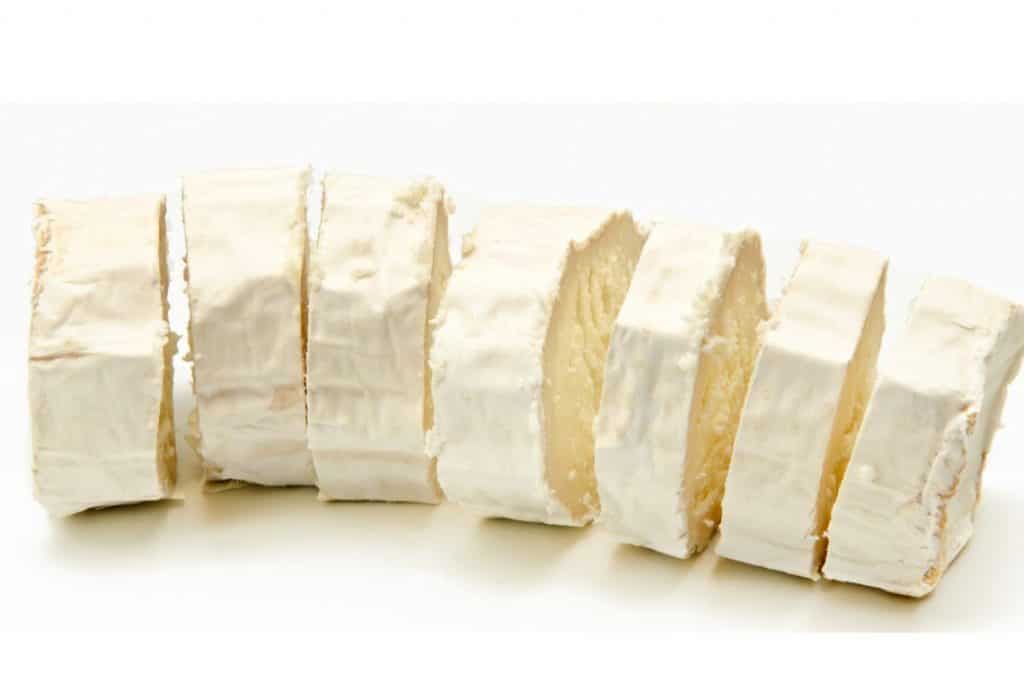
Here are some delightful accompaniments that perfectly complement the creamy goodness of goat cheese:
Fruits And Berries That Pair Well With Goat Cheese:
- Fresh figs: These sweet and juicy fruits provide a delightful contrast to the tanginess of goat cheese. The combination of their honey-like flavor and creamy texture creates a delightful balance on your palate.
- Pears: The subtle sweetness and delicate texture of pears make them an excellent choice to pair with goat cheese. Slice them thinly and arrange them on a cheese platter or use them as a topping for a goat cheese and arugula salad.
- Strawberries: The vibrant sweetness of strawberries adds a burst of freshness when paired with the creaminess of goat cheese. They’re a match made in heaven, whether served together in a salad, on a crostini, or even in a dessert.
- Grapes: The natural sweetness and crisp texture of grapes provide a refreshing contrast to the creamy and tangy notes of goat cheese. They’re an ideal accompaniment for a goat cheese and charcuterie platter or as a garnish for salads.
Breads And Crackers To Complement The Flavors:
- Baguette slices: The crusty exterior and soft, chewy interior of a baguette are the perfect vehicle for goat cheese. Toasted or simply fresh, baguette slices provide a neutral base that allows the flavors of the cheese to shine.
- Crackers: Choose a variety of crisp and sturdy crackers to complement the flavors of goat cheese. Select options like whole grain, rosemary-flavored, or sea salt crackers. Their subtle flavors and crunchy texture provide a delightful contrast to the creamy cheese.
- Crostini: These toasted bread slices add an elegant touch to goat cheese. Rubbed with garlic and drizzled with olive oil, crostini make a delicious base for spreading goat cheese and topping it with your favorite accompaniments.
Selecting The Perfect Wines And Other Beverages:
- Sauvignon Blanc: This vibrant white wine with its crisp acidity and herbal notes pairs exceptionally well with goat cheese. The citrusy flavors and refreshing finish of Sauvignon Blanc enhance the tanginess of goat cheese.
- Rosé: A dry and fruity rosé wine complements the creamy texture of goat cheese while offering a refreshing contrast. The light and delicate flavors of rosé work well with both fresh and aged goat cheese.
- Sparkling water with citrus: If you prefer a non-alcoholic option, sparkling water with a slice of lemon or lime can be a refreshing companion to goat cheese. The effervescence cleanses the palate, allowing you to fully appreciate the flavors of the cheese.
With the right accompaniments, goat cheese becomes an even more delightful and versatile ingredient. Whether you’re enjoying it as an appetizer, in a salad, or as part of a main course, pairing it with these delicious options will elevate your culinary experience.
Take the time to explore different combinations and discover your own favorite pairings.
Health Benefits Of Goats Cheese
Goats cheese offers a range of health benefits, including high protein content, lower lactose levels compared to other cheeses, and the presence of vitamins and minerals. Its distinct flavor and creamy texture make it a popular choice for those seeking a nutritious and delicious alternative to cow’s milk cheese.
Goats cheese is not only delicious but also provides numerous health benefits that make it a healthier alternative to other types of cheese. Rich in key nutrients and vitamins, goats cheese offers a range of advantages for your overall well-being.
Additionally, goat cheese is highly suitable for individuals with lactose intolerance, as it tends to have a lower lactose content compared to other dairy products. In this section, we will explore the health benefits of goats cheese, including why it is a healthier option, the key nutrients and vitamins it contains, and its impact on lactose intolerance.

Why Goats Cheese Is A Healthier Alternative To Other Types Of Cheese:
- Goats cheese is lower in calories compared to many other types of cheese, making it a good choice for those watching their weight or trying to maintain a healthy lifestyle.
- It contains a higher proportion of healthy fatty acids, such as medium-chain fatty acids, which are known to offer various health benefits.
- Goats cheese is easier to digest than cow’s milk cheese, mainly due to its protein structure, which is more similar to human milk, making it gentler on the stomach.
- It is naturally lower in lactose, as goats milk has a reduced lactose content compared to cow’s milk. This makes it a suitable option for individuals with lactose intolerance.
Key Nutrients And Vitamins Found In Goat Cheese:
- Protein: Goats cheese is a good source of high-quality protein, essential for building and repairing tissues in the body.
- Calcium: It is rich in calcium, which is vital for maintaining strong bones and teeth. Adequate calcium intake also contributes to healthy nerve function.
- Vitamin A: Goats cheese contains vitamin A, which plays a crucial role in maintaining good vision, promoting healthy skin, and supporting the immune system.
- Vitamin B: It is a good source of various B vitamins, including riboflavin (B2), which is essential for energy production, and vitamin B12, required for the formation of red blood cells.
- Zinc: Goats cheese provides zinc, a mineral that supports immune function and helps with wound healing.
Goat Cheese And Its Impact On Lactose Intolerance:
- Many individuals with lactose intolerance find that they can tolerate goats cheese more easily than cow’s milk cheese due to its lower lactose content.
- The lactose in goats cheese is usually well tolerated because the lactose molecules are smaller and more easily digested.
- Goats cheese can be a suitable alternative for those who experience discomfort or digestive issues after consuming cow’s milk cheese.
Incorporating goats cheese into your diet not only adds a delicious and creamy flavor to various dishes but also offers a range of health benefits. Whether you are looking for a healthier cheese option, seeking essential nutrients and vitamins, or managing lactose intolerance, goats cheese can be a fantastic choice.
Culinary Uses Of Goats Cheese
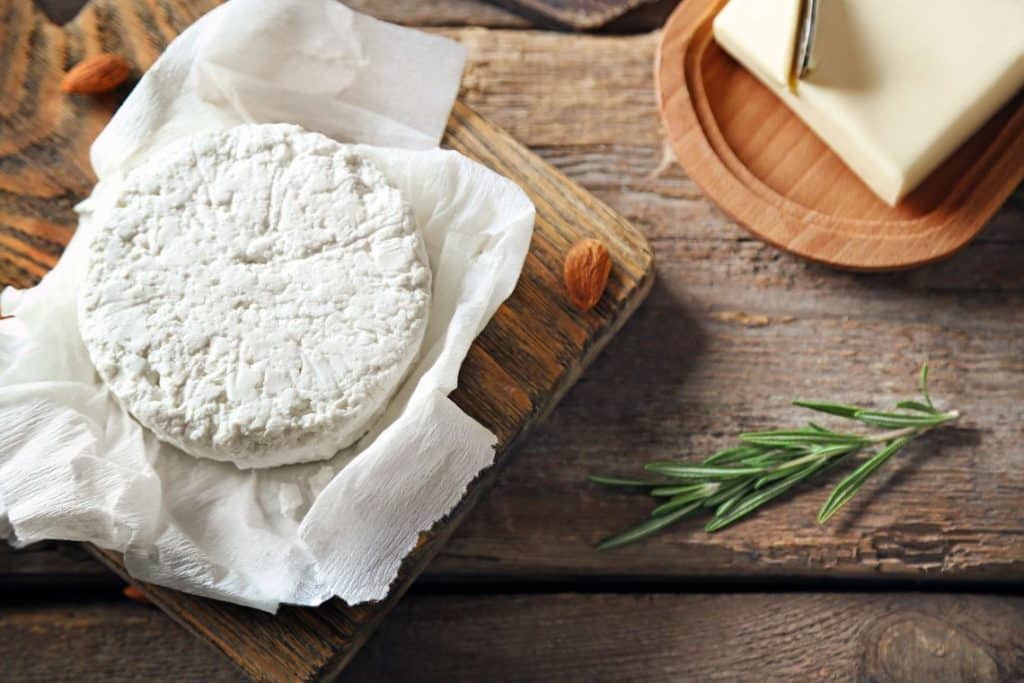
Goat cheese is a versatile ingredient that adds a tangy and creamy flavor to various culinary dishes. Whether crumbled in salads, melted on pizzas, or spread on toast, goat cheese is a savory addition that elevates any dish.
Goat cheese is a versatile ingredient that can add a unique and tangy flavor to a wide variety of dishes. Whether you’re a fan of salads and appetizers, main courses and side dishes, or even desserts and sweet treats, there are countless ways to incorporate goat cheese into your culinary creations.
In this section, we’ll explore some creative and delicious ways to use goat cheese in each of these categories.
Incorporating Goat Cheese Into Salads And Appetizers:
- Crumble goat cheese over a fresh leafy green salad for a creamy and tangy twist.
- Spread goat cheese on crackers or toasted bread for a simple yet delicious appetizer.
- Combine goat cheese with roasted vegetables and drizzle with balsamic glaze for a flavorful salad.
Adding Goat Cheese To Main Courses And Side Dishes:
- Stuff chicken breasts with goat cheese and herbs for a flavorful and moist dish.
- Mix goat cheese into mashed potatoes for a creamy and tangy side dish.
- Crumble goat cheese on top of pizza or pasta dishes for an added layer of flavor.
Including Goat Cheese In Desserts And Sweet Treats:
- Make a savory-sweet combination with goat cheese by spreading it on toasted baguette slices and topping it with honey and fresh berries.
- Whip goat cheese with honey and vanilla extract to create a deliciously tangy frosting for cakes or cupcakes.
- Incorporate goat cheese into cheesecakes or tarts for a unique and decadent dessert option.
These are just a few examples of how you can incorporate goat cheese into your culinary creations. The creamy and tangy flavors of goat cheese can elevate any dish, adding complexity and richness. So next time you’re in the kitchen, don’t hesitate to experiment with this versatile ingredient and discover your own favorite ways to use goat cheese!
Tips For Selecting And Storing Goats Cheese
Looking for tips on selecting and storing goat’s cheese? Discover expert advice on how to choose the perfect goat’s cheese and keep it fresh for longer.
How To Choose The Best Goat Cheese At The Store Or Farmers Market
When it comes to selecting delicious goat cheese, there are a few key factors to consider. To help you make the best choice, here are some tips for choosing the best goat cheese at the store or farmers market:
- Look for a fresh and creamy texture: A good goat cheese should have a smooth and creamy texture. Avoid goat cheese that looks dry or crumbly.
- Check the color: A high-quality goat cheese will have a creamy white or light ivory color. Be wary of any goat cheese that appears discolored or has an off-white hue.
- Smell the cheese: Take a moment to sniff the cheese. A fresh and high-quality goat cheese will have a mild, sweet, and slightly tangy aroma. If the cheese smells overly strong or unpleasant, it may not be fresh.
- Consider the age: Goat cheese can vary in age, from young and mild to aged and tangy. Choose the age that best suits your taste preferences.
- Ask for recommendations: If you’re unsure which goat cheese to choose, don’t hesitate to ask for recommendations from the store or market staff. They can provide valuable insights and suggest specific varieties based on your preferences.
Proper Storage Techniques To Maintain Freshness And Flavor
Properly storing your goat cheese is crucial to maintain its freshness and flavor. Follow these storage techniques to ensure your goat cheese stays delicious:
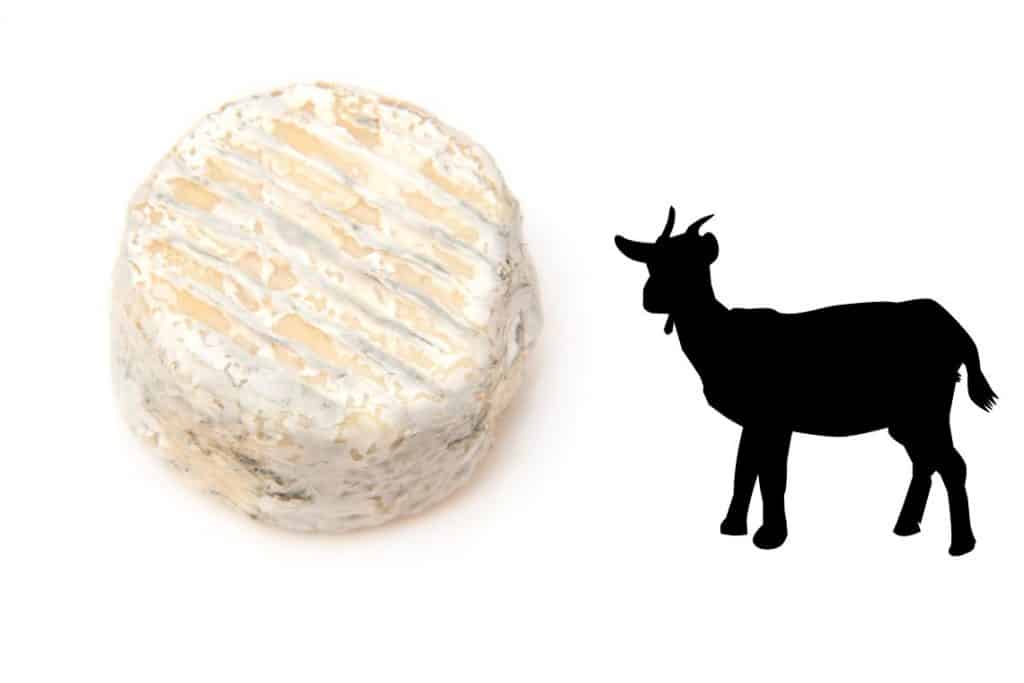
- Keep it refrigerated: Goat cheese should always be stored in the refrigerator, preferably in an airtight container or tightly wrapped in plastic wrap. This helps prevent moisture loss and the absorption of unwanted odors from other foods.
- Avoid storing with strong-smelling foods: Goat cheese easily absorbs odors, so be sure to store it separately from strong-smelling foods like onions or garlic. This will help maintain its unique flavor profile.
- Use within a few days: Goat cheese is best enjoyed when fresh. It should ideally be consumed within a few days of purchase to ensure maximum flavor and quality.
- If necessary, freeze it: If you need to store goat cheese for an extended period, freezing can be an option. Wrap individual portions tightly in plastic wrap or place them in an airtight container before freezing. Thaw the cheese in the refrigerator before consuming.
Length Of Time Goat Cheese Can Be Stored Before Consumption
Goat cheese can generally be stored for a limited period before consumption. Here are some guidelines to keep in mind:
- Fresh and soft goat cheese: Fresh and soft goat cheese has a shorter shelf life and should ideally be consumed within one to two weeks of purchase.
- Aged goat cheese: Aged goat cheese, with its more intense flavor, can be stored for a longer period. It can generally be enjoyed for up to two to three months if stored properly.
- It’s essential to always check the expiration date on the packaging of your goat cheese. If it shows signs of spoilage such as mold growth, an off-putting odor, or an unusual texture, it’s best to discard it.
Remember, these are general guidelines, and the specific storage times may vary depending on the type and quality of the goat cheese. Trust your senses and use your judgment to determine if the goat cheese is still safe and enjoyable to eat.
Exploring Regional Goats Cheese Delicacies
Discover the exquisite flavors of regional goats cheese delicacies, a delightful culinary experience for cheese connoisseurs. Experience the rich, creamy texture and tangy taste of artisanal goats cheese from around the world.
Famous Goat Cheese Varieties From Different Countries And Regions
There is no denying that goat cheese is a delicacy enjoyed worldwide. From France to Spain and beyond, various countries and regions have their own famous goat cheese varieties. Let’s take a closer look at some of these renowned cheeses:
- French Goat Cheese:
- Chèvre: This creamy and tangy cheese is a staple in French cuisine. It boasts a distinct white rind and a delightful, slightly acidic flavor.
- Valençay: With its truncated pyramid shape, this cheese offers a unique visual appeal. Its flavors range from citrusy and earthy when young to nutty and complex when aged.
- Crottin de Chavignol: Originating from the Loire Valley, this cheese is known for its intense flavor profile. It begins with a mild taste, then develops a nutty, goaty finish.
- Spanish Goat Cheese:
- Cabrales: Hailing from the Asturias region, this Spanish blue cheese is made from a mix of goat, cow, and sheep’s milk. Its bold and piquant flavor makes it a favorite among cheese enthusiasts.
More inforamation
- Garrotxa: Produced in Catalonia, this cheese has a semi-hard texture and a slightly sweet and nutty taste. Its natural rind adds an earthy dimension.
- Majorero: From the Canary Islands comes this cheese made from Canary Island goat milk. It offers a creamy, buttery texture with a mild, slightly salty flavor.
- Italian Goat Cheese:
- Caprino: This soft and creamy goat cheese from Italy has a delicate and slightly tart taste. Its versatility makes it an excellent choice for both sweet and savory dishes.
- Sardinian Pecorino: Made from a blend of sheep and goat milk, this cheese has a firm texture and a sharp, tangy flavor. It is often grated and used as a topping for pasta dishes.
- Robiola: This Italian cheese is made from a blend of goat, cow, and sheep’s milk. It has a velvety texture and a mild yet distinctive taste.
Unique Flavor Profiles And Production Methods Of Regional Goat Cheese
Regional goat cheeses not only vary in taste but also differ in their production methods, resulting in distinctive flavor profiles. Here are some examples:
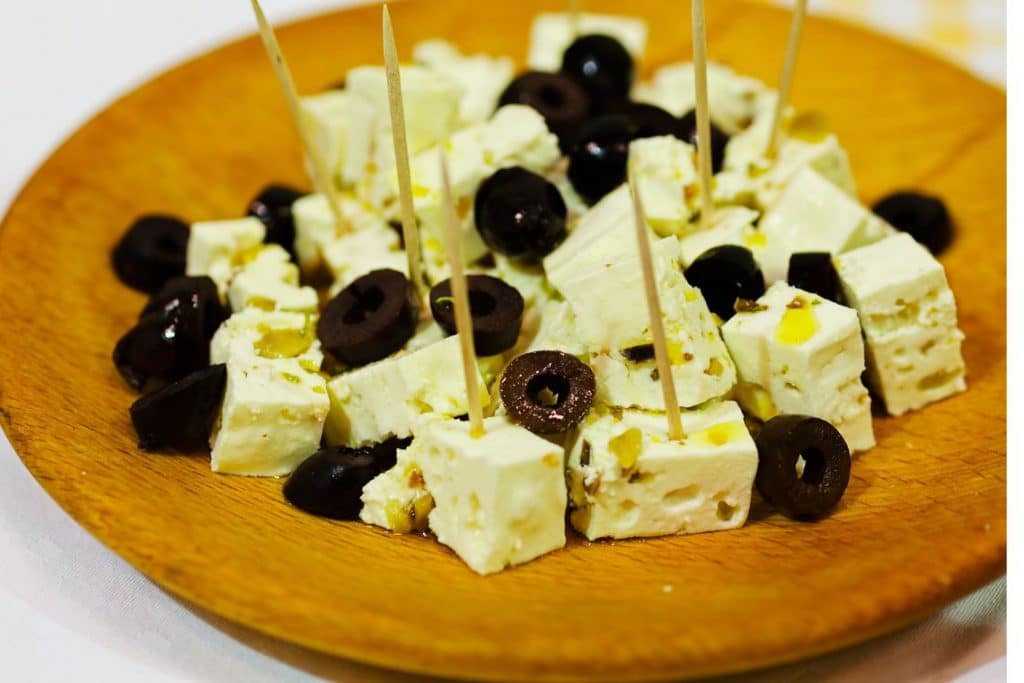
- French Goat Cheese:
- Loire Valley: The goats are fed on the aromatic grasses and herbs of the region, imparting a delicate floral and herbal flavor to the cheeses.
- Pyrenees: The goats graze on mountain pastures, leading to cheeses with a subtle, grassy taste and hints of wildflowers.
- Provence: Here, the goats feed on lavender, thyme, and rosemary, creating cheeses with a fragrant and aromatic character.
- Spanish Goat Cheese:
- La Mancha: The goats are primarily fed on almond leaves and twigs, resulting in cheeses with a nutty and slightly bitter taste.
- Andalusia: The coastal influence can be detected in the cheeses, characterized by a touch of saltiness and a tangy, bright flavor.
- Catalonia: The goats graze on lush green pastures, lending an herbaceous and fresh quality to the cheeses.
- Italian Goat Cheese:
- Tuscany: The goats are often raised on a diet of wild herbs, thyme, and rosemary, resulting in cheeses with an earthy and aromatic essence.
- Lombardy: In this region, the goats are fed on a mix of fresh grass and wildflowers, creating cheeses with a mild and balanced flavor.
Whether you prefer the creamy and tangy French varieties or the nutty and herbaceous Spanish cheeses, exploring regional goat cheese delicacies offers a truly unique culinary experience. Each cheese tells a story of its origin, showcasing the diverse flavors that can be achieved through different production methods and feeding practices.
So go ahead, indulge in the world of goat cheese, and savor the distinct tastes from around the globe.
Goat Cheese In Gourmet Cooking
Goat cheese is a versatile ingredient in gourmet cooking, adding a creamy richness and tangy flavor to a variety of dishes. Whether sprinkled over salads, melted into pasta, or spread on crusty bread, goat cheese elevates any culinary creation. Its distinct taste and texture make it a favorite among chefs and food enthusiasts alike.
Goat cheese, with its creamy and tangy flavor, has become a staple in gourmet cooking. Renowned for its versatility and unique taste, goat cheese has found a place in haute cuisine and Michelin-starred restaurants around the world. From delicate appetizers to rich mains, here’s how this delectable cheese can elevate any dish to new heights:
Goat Cheese In Haute Cuisine And Michelin-Starred Restaurants
- Chefs in haute cuisine establishments and Michelin-starred restaurants are no strangers to the delightful potential goat cheese brings to their creations.
- This beloved cheese is often featured in elaborate tasting menus and innovative dishes, showcasing its exquisite taste and texture.
- Goat cheese is frequently used as the star ingredient, creating memorable and complex flavors that leave diners craving more.
- Its tangy and creamy qualities pair exceptionally well with a range of ingredients, making it a favorite among chefs looking to create dishes that are both impressive and delicious.
- Chefs use goat cheese in both savory and sweet dishes, taking advantage of its versatility and ability to enhance various flavor profiles.
- Whether it is elegantly incorporated into delicate starters or prepared as a luscious filling for ravioli, goat cheese always takes center stage in gourmet creations.
- The distinctive flavor and creamy texture of goat cheese add a sophisticated touch to any dish, providing an elevated culinary experience.
Creative Culinary Uses And Innovative Recipes Featuring Goat Cheese
- Chefs and culinary enthusiasts have been experimenting with goat cheese, creating innovative recipes that highlight its unique qualities.
- The creamy and tangy taste of goat cheese makes it an excellent choice for both savory and sweet applications.
- Incorporating goat cheese into salads adds a delightful tang and creaminess, balancing the flavors of fresh greens and other ingredients.
- Use goat cheese as a stuffing for vegetables or meats to infuse them with rich flavor and a creamy texture.
- For a delightful twist, try spreading goat cheese onto crostini and topping it with seasonal fruits, honey, or balsamic glaze for a burst of contrasting flavors.
- Baking goat cheese into savory tarts or quiches adds a creamy, decadent element that complements the other ingredients beautifully.
- Create unique desserts by incorporating goat cheese into creamy cheesecakes, fluffy mousses, or even sweet soufflés for an unforgettable dessert experience.
- The versatility of goat cheese opens up a world of possibilities in the kitchen, allowing chefs and home cooks alike to push the boundaries of culinary creativity.
Embrace the culinary potential of goat cheese, and let your imagination soar as you explore the countless ways to incorporate this indulgent treat into your gourmet cooking. From Michelin-starred restaurants to your own kitchen, goat cheese is a delightful addition that will impress even the most discerning palates.

Enjoy its tangy, creamy goodness as you elevate your culinary creations to the next level.
The Growing Popularity Of Goats Cheese
Goats cheese is gaining popularity rapidly due to its distinctive flavor and creamy texture. It is a delicious and versatile alternative to traditional cow’s milk cheese, making it a favorite among food enthusiasts.
Goats cheese, also known as chèvre, has been gaining immense popularity in recent years. This creamy and tangy cheese has found its way into the hearts and palates of cheese enthusiasts all over the world. From a rise in consumption and demand to the emergence of artisanal producers, goats cheese has become a star in the culinary world.
Let’s delve deeper into the growing popularity of goats cheese.
Trends In Goat Cheese Consumption And Demand:
- Increasing interest in goat milk products: Goats cheese has become a sought-after alternative to traditional cow’s milk cheese. Its unique flavor profile and potential health benefits have led to a surge in demand.
- Growing demand for artisanal and locally produced cheese: Consumers are increasingly seeking out handcrafted and locally sourced products. This trend has paved the way for small-scale goat cheese producers to thrive, offering distinct flavors and high-quality cheese.
- Expanding market for specialty and gourmet cheese: Goat cheese has become a staple in the gourmet food industry. With its versatility and ability to complement a wide range of dishes, it has found its place on the shelves of specialty food stores and high-end restaurants.
The Rise Of Artisanal Goat Cheese Producers:
- Attention to quality and craftsmanship: Artisanal goat cheese producers prioritize quality over quantity. Their cheeses are often made in small batches using traditional methods, resulting in unique flavors and textures.
- Sustainable and ethical practices: Many artisanal producers focus on sustainable farming practices, prioritizing the well-being of their goats and the environment. This ethical approach resonates with consumers who value transparency and responsible sourcing.
- Embracing creativity and innovation: Artisanal producers are constantly experimenting with new flavors and techniques, pushing the boundaries of traditional goat cheese. From infused varieties to aged cheeses with complex flavor profiles, they offer a diverse range of options for cheese enthusiasts.
Goat Cheese On Menus And In Retail Establishments:
- A versatile ingredient: Goat cheese has become a go-to ingredient for chefs looking to add a tangy and creamy element to their dishes. It can be found in salads, pastas, pizzas, and even desserts, showcasing its versatility in various culinary creations.
- Appealing to health-conscious consumers: Goat cheese is often perceived as a healthier alternative to cow’s milk cheese. It is lower in lactose and contains fewer calories and fat, making it a popular choice among those with dietary restrictions or seeking a lighter option.
- Availability in retail stores: Goat cheese is now readily available in mainstream retail establishments. Supermarkets and specialty cheese shops offer a wide selection of goat cheese varieties, catering to the growing demand from consumers.
The growing popularity of goat cheese can be attributed to its unique flavor profile, versatility, and potential health benefits. As consumers embrace the trend of artisanal and locally produced food, the demand for high-quality goat cheese will continue to rise.
Whether it’s on menus at top-notch restaurants or in retail stores, goats cheese has secured a prominent spot in the culinary landscape. So why not treat yourself to a crumbly and satisfying bite of this delightful cheese?
Best Practices For Serving And Enjoying Goats Cheese
Discover the best practices for serving and savoring delicious goat’s cheese. Enhance your culinary experience with these expert tips and enjoy the distinct flavors of this beloved cheese.
Best Practices For Serving And Enjoying Goat Cheese
Goat cheese is a versatile and delicious addition to any gathering or event. Whether you are hosting a party or attending a potluck, knowing the best practices for serving and enjoying goat cheese can elevate your culinary experience. From presentation tips to flavor pairings and savoring nuances, this guide will help you make the most of your goat cheese.
Tips For Presenting Goat Cheese At A Gathering Or Event:
- Choose a variety of goat cheeses: Opt for a selection of different goat cheeses with varying textures and flavors. This ensures that there is something for everyone’s taste preferences.
- Arrange a cheese board: Create an eye-catching display by arranging the goat cheeses on a wooden board or platter. Add complementary accompaniments like crackers, fresh fruit, and nuts for visual appeal and additional flavors.
- Label the cheeses: Provide small labels or tags with the names of each goat cheese. This helps guests distinguish between the different varieties and learn about their unique characteristics.
- Serve at room temperature: Take the goat cheese out of the refrigerator about 30 minutes before serving. Allowing it to come to room temperature enhances its flavor and texture.
- Offer different utensils: Provide a variety of knives or cheese slicers for guests to use when serving themselves. Each cheese may require a specific type of utensil to preserve its shape and texture.
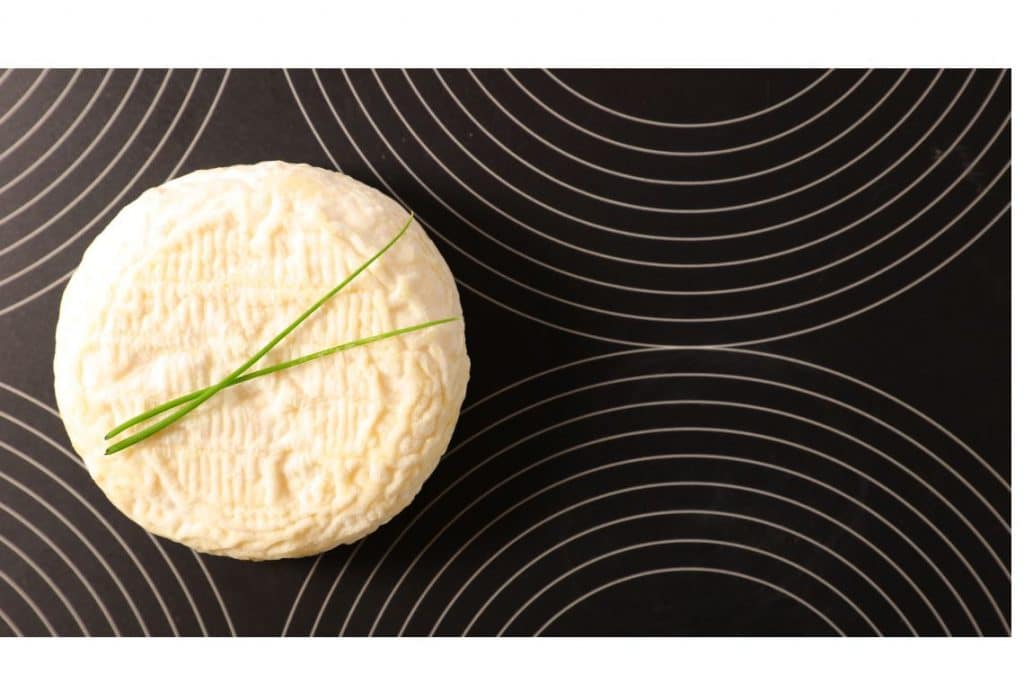
Pairing Goat Cheese With Other Ingredients For Maximum Flavor:
- Fresh herbs and honey: The earthy and tangy notes of goat cheese pair perfectly with the sweetness of honey and the freshness of herbs like thyme or rosemary. Drizzle honey over the cheese and sprinkle herbs on top for a burst of flavor.
- Fruits and berries: Goat cheese harmonizes well with a variety of fruits. Try pairing it with sliced apples or pears, or even adding berries like strawberries or raspberries for a refreshing combination of sweet and savory.
- Nuts and seeds: Adding some crunch to goat cheese can elevate its taste. Consider sprinkling toasted almonds or walnuts on top or serving it with a side of roasted pumpkin seeds for a delightful textural contrast.
- Balsamic glaze or reduction: Enhance the creaminess of goat cheese by drizzling it with balsamic glaze or reduction. The tangy and slightly sweet flavors of the balsamic perfectly balance the richness of the cheese.
How To Savor And Appreciate The Nuances Of Goat Cheese:
- Take small bites: To fully appreciate the flavors and textures of goat cheese, take small bites and allow them to melt on your tongue. This allows you to experience the creamy and slightly tangy notes in each mouthful.
- Pair with neutral foods: To truly savor the nuances of goat cheese, pair it with neutral foods like plain crackers or baguette slices. This ensures that the cheese takes center stage and the subtle flavors are not overpowered.
- Experiment with wine pairings: Goat cheese pairs well with a variety of wines. Try a crisp and acidic Sauvignon Blanc or a light-bodied Pinot Noir to enhance the flavors of the cheese. The wine should complement but not overpower the delicate taste of the goat cheese.
- Explore different textures: Goat cheese comes in various forms, ranging from soft and creamy to crumbly and firm. Try different textures to discover the ones you enjoy the most and appreciate the differences in taste and mouthfeel.
Now that you know the best practices for serving and enjoying goat cheese, it’s time to put this knowledge into action. Impress your guests with a thoughtfully arranged cheese board, experiment with flavor pairings, and savor each bite to truly appreciate the nuances of goat cheese.
Enjoy this versatile and delicious ingredient in all its creamy, tangy glory.
Frequently Asked Questions Of Goats Cheese
Is Goat Cheese A Healthier Cheese?
Goat cheese is generally considered a healthier option compared to other cheese varieties.
Are Feta And Goat Cheese The Same?
Feta and goat cheese are not the same; feta is made with sheep’s milk, while goat cheese is made with goat’s milk.
Is Goat Cheese Also Dairy?
Yes, goat cheese is a type of dairy product made from goat’s milk.
What Is The Best Tasting Goat Cheese?
The best-tasting goat cheese varies depending on personal preference and can range from mild and creamy to tangy and robust.
Conclusion
Goat’s cheese is a versatile and delicious option for both cooking and enjoying on its own. From its rich and creamy texture to its tangy and distinctive flavor, goat’s cheese is a standout choice for cheese lovers. Whether you’re adding it to salads, spreading it on bread, or incorporating it into your favorite recipes, goat’s cheese adds a unique and satisfying taste to any dish.
Not only is it delicious, but it also offers several health benefits. It is lower in fat and calories compared to other types of cheese and contains essential nutrients like calcium and protein. Additionally, goat’s cheese is easier to digest for those who are lactose intolerant.
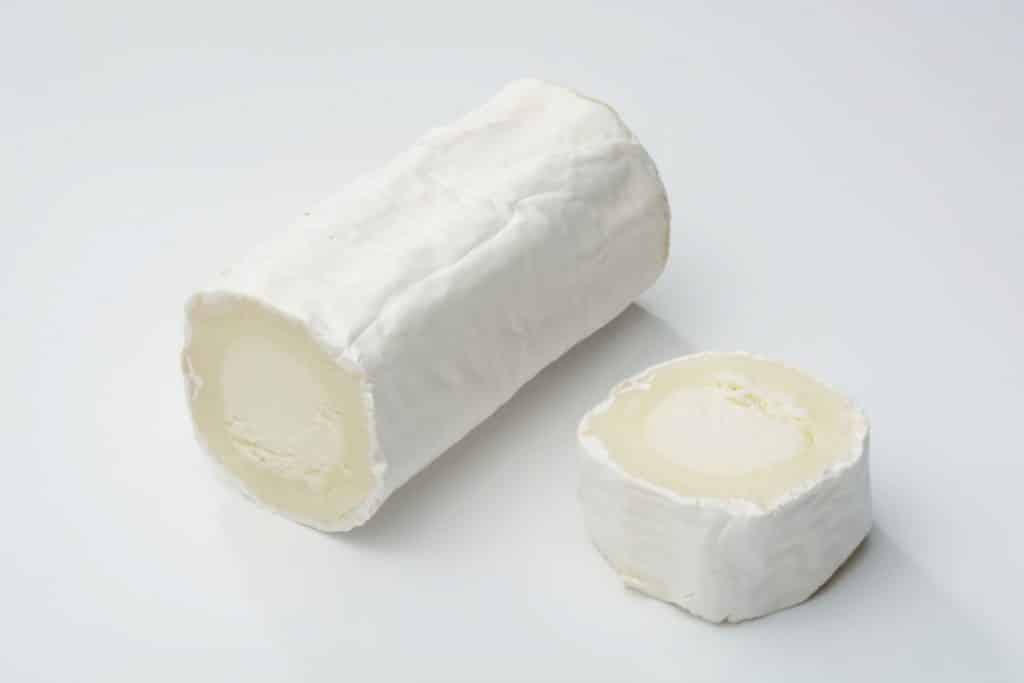
So whether you’re a fan of goat’s cheese already or are looking to try something new, this versatile and flavorful cheese is definitely worth exploring.

